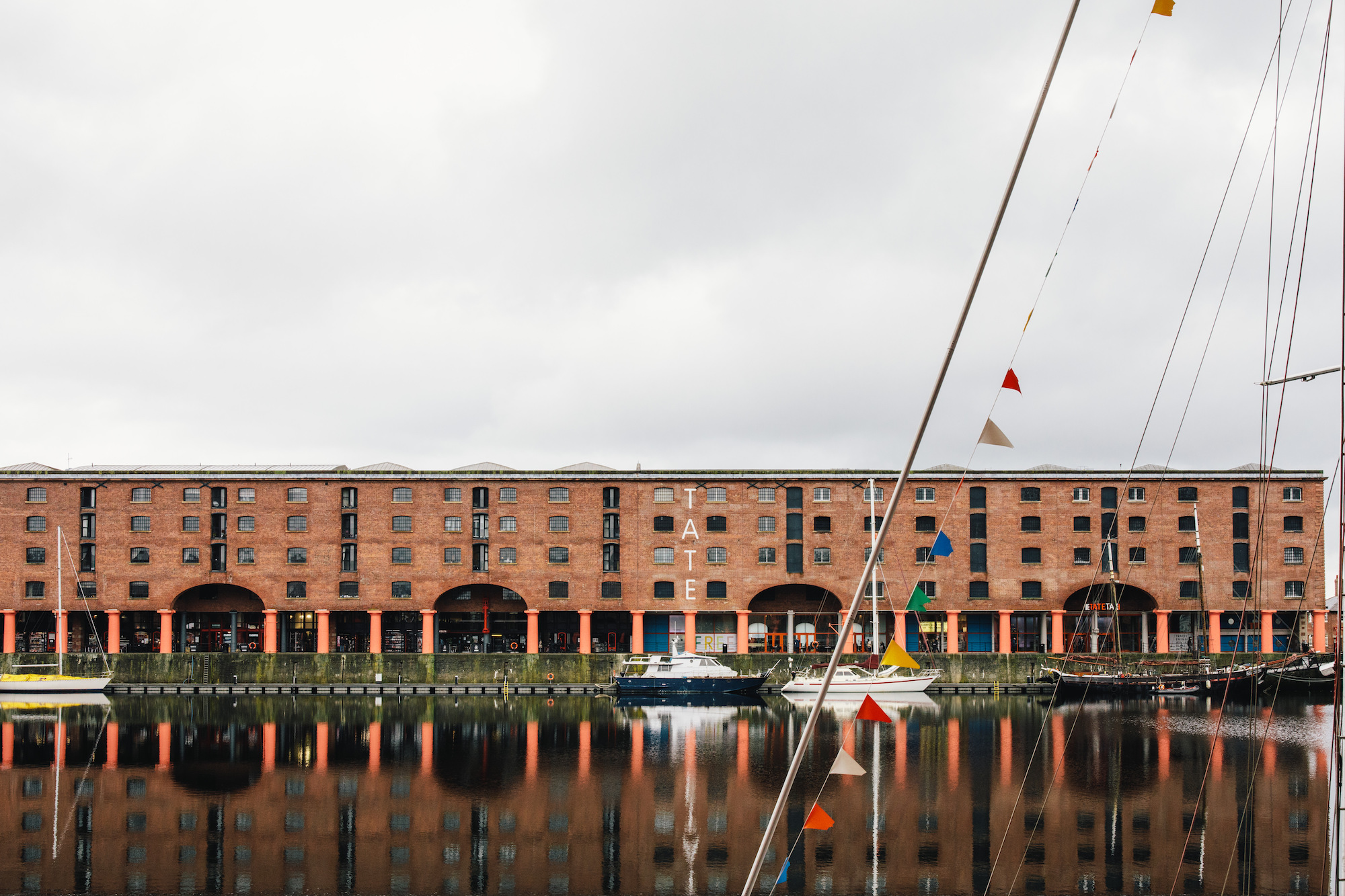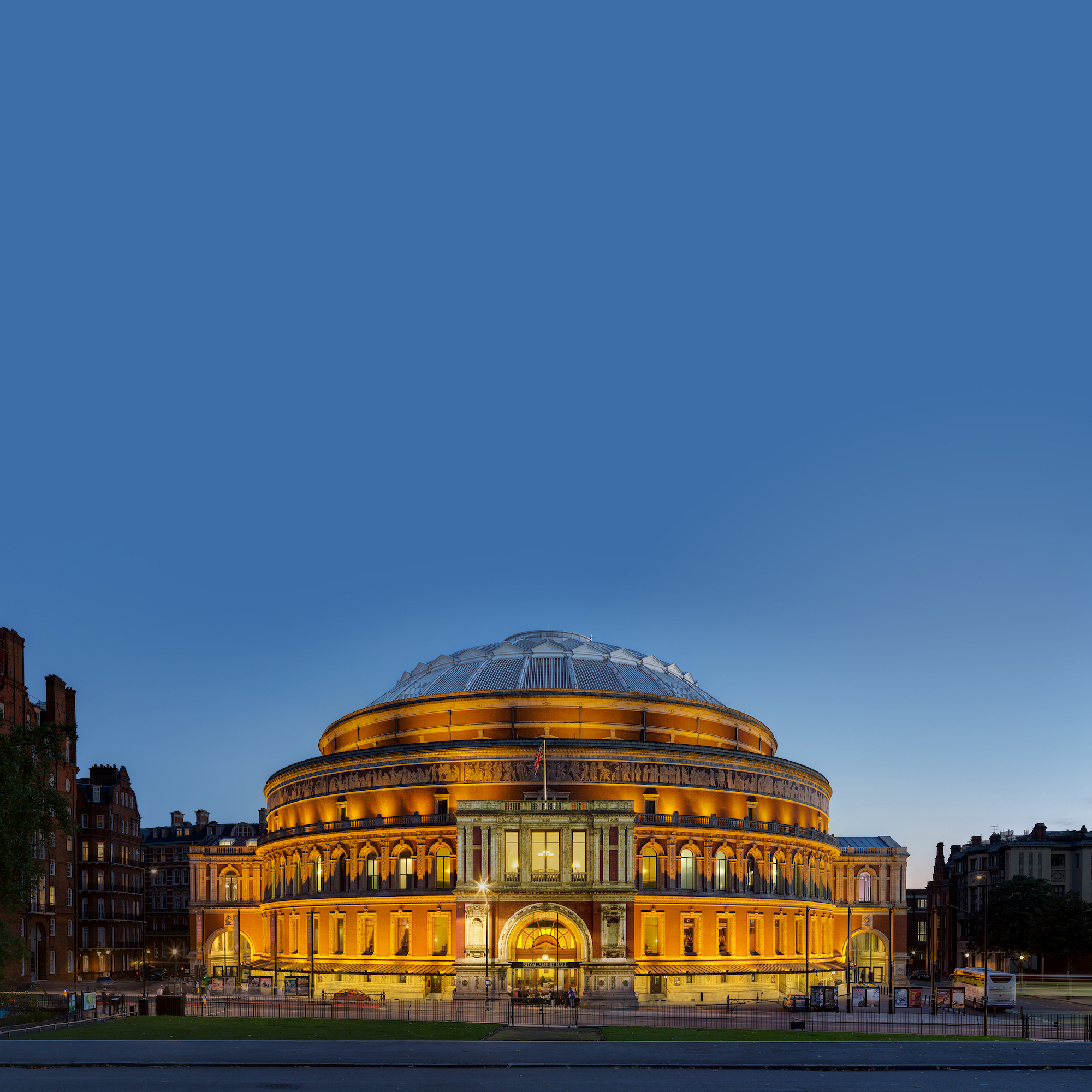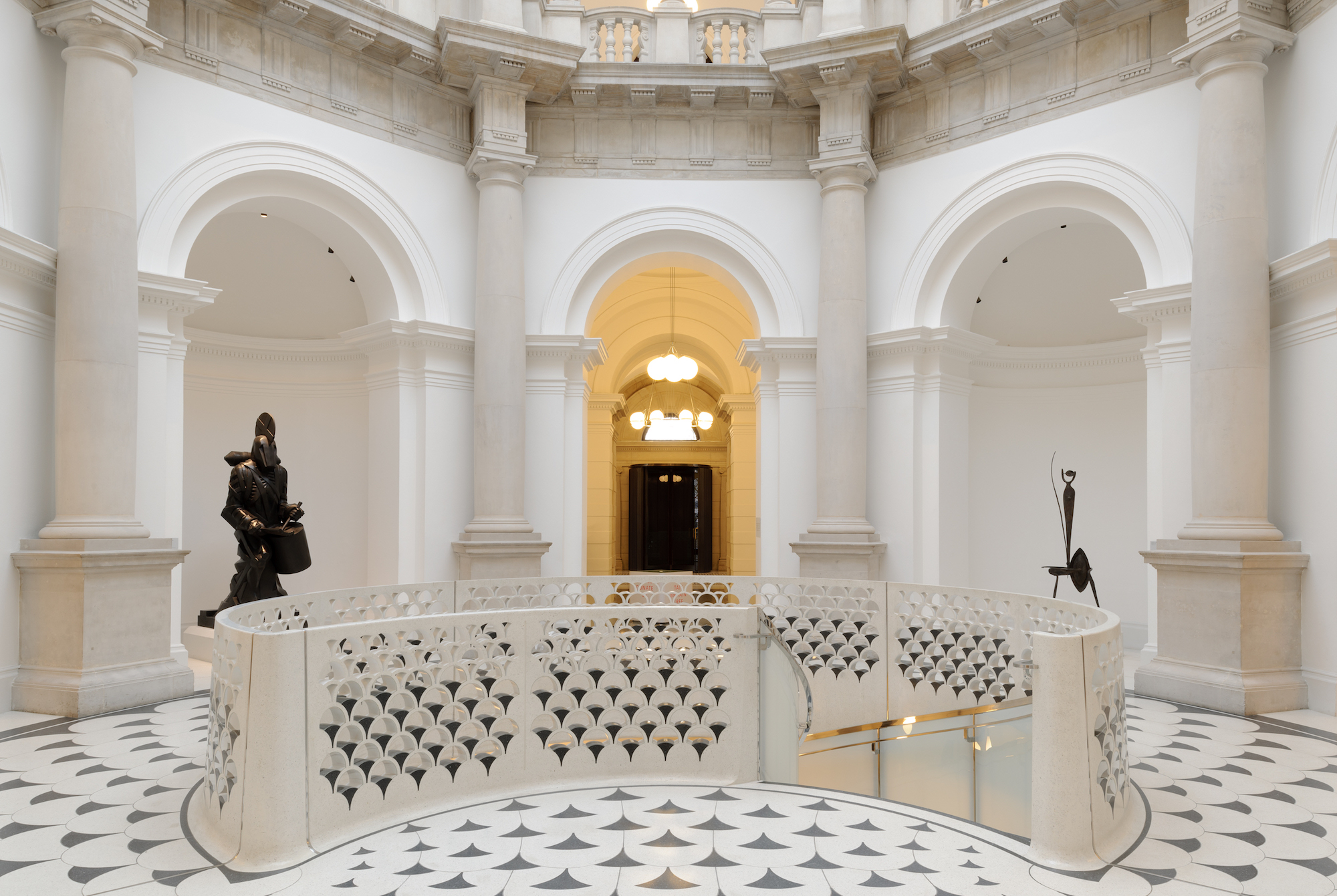
In recent years, government cuts have forced public galleries and museums in the UK to rely on delicate financial webs to survive, the cornerstone of which is a steady stream of domestic and international tourists. The coronavirus crisis has upended what was an already precarious model, with paid exhibition revenue increasingly supplemented through commercial avenues—from bookshops and wedding hire to corporate sponsorship. “The situation is really dire,” says Anupam Ganguli, Director of Finance at the Royal Albert Hall, and a former senior executive at the V&A and the Arts Council.
The subsequent rise of the “Blockbuster” exhibition is well documented, bringing big name recognition artists and series, which allow government-sponsored galleries to meet yearly performance indicators—a mixture of visitor, educational and digital outreach targets. Now, the combination of social distancing measures and massively reduced tourism rates during the pandemic presents an existential threat to these venues. Free entry to not just the major London galleries, but the National Museum of Scotland, the Royal Armories in Leeds and more, is a source of great international admiration. It now appears as though it could dig publicly-funded galleries and museums into an even deeper financial hole.
In the US, where galleries rarely receive federal subsidies, tiered pricing at venues like the Art Institute of Chicago allow generous discounts for concessions, but free entry is rare. In France, generous government support is topped up with widespread paid admission. Subscriptions and membership schemes are also an option; in the UK, public support for Lottery funding of arts and culture is nearly nearly 30 percent higher than state funding through taxation, which in 2015 stood at only 37 percent. With many venues now facing revenue black holes over the coming months, could free access be under threat? And is it still the best hope for ending decades of cultural access inequalities?

The last twenty years of free access has been an undoubted success for overall gallery numbers. In 1998, Labour culture secretary Chris Smith (now Chairman of the Art Fund) announced £290m of extra funding for the arts, museums and galleries. Free admission for national venues followed, with charges dropped in stages from 1999. From December 2001, national museums and galleries were free to the public, despite pushback from the National History Museum and others.
Visitor rates rose spectacularly the following year: London’s V&A, which watched its attendance halve after it introduced £5 admission in 1997, saw an 111 percent increase. The average rise across all national museums was 70 percent. This followed the success of the newly opened (and free) Tate Modern, which welcomed 5.2m people in its first year alone (it managed 5.8m in 2018, the first and only year that the Louvre, which charges most attendees, broke the 10m barrier). Free entry was sustained through increases to government funding—which compensated museums for lost income, and also allowed non-charging museums to reclaim VAT.
“There’s just so much digital content out there, why would people pay to see anything online?”
During lockdown, digital alternatives have proved popular for would-be gallery goers and arts audiences. Although 1.2m have accessed the Royal Albert Home sessions, these hardly generate any revenue, despite a clear invitation for donations. “There’s just so much digital content out there, why would people pay to see anything online?” Ganguli asks. Many institutions are reporting similar struggles: last week The Times reported that despite reaching 15m people globally, the National Theatre’s at-home streaming service was garnering roughly 20p per viewer. Until social distancing is eradicated, the Hall has no choice but to imitate their pre-Covid heyday as best they can: the second half of Proms season will take place behind closed doors, broadcast by the BBC.
There are worries about whether audiences will return at all. Ganguli is concerned about older patrons in particular, who may avoid venues for many months after their less at-risk juniors return. Ticket prices will likely have to stay the same to recover footfall; entrenching exclusivity further to raise revenue doesn’t seem like an option. Even with the recently announced £1.57bn rescue plan for the arts—of which £100m will be directed towards England’s national venues and English Heritage—coronavirus’ impact on widening inequalities seems inevitable.

Could broadening subscription services like the Art Fund’s Art Pass, which gives free access to more than 200 UK venues, be a long-term solution? Possibly, but it would require a shift in the way that we view our institutions—though continual government cuts have accelerated the conversation. In 2011, Stephen Deuchar, then director of the Art Fund, questioned the viability of free entry, observing that “government grants haven’t risen in line with the number of visitors, so in effect the public subsidy has been falling”. He was correct: between 2010 and 2015, public investment in national museums fell by 30 percent; the figure was as much as 60 percent in some local authorities.
Completely replacing free entry with subscription models would be a significant logistical challenge, and would represent a dramatic overhaul of British cultural life. After years of state support, accepting that historic venues need sustaining via philanthropy would be a difficult psychological barrier to overcome, despite the 159,000 current patrons of the Art Pass and the success of similar initiatives. “The main reason people become a friend is to be able to get into a special exhibition at a time of their choosing and without having to pay,” says Ganguli of the Royal Albert Hall. He doesn’t believe that the UK will follow the US in introducing tiered pricing. “The success of the sector over the last 20 years is a testament to free admission,” he says. “Means-testing comes with its own sets of problems and issues; it’s actually quite difficult to implement.”
“The success of the sector over the last 20 years is a testament to free admission. Means-testing comes with its own sets of problems”
If subscriptions were to make up a significant portion of revenue in the future, regular donations may no longer confer as many extra privileges—though the shift may be more palatable if free-entry for lower-income visitors was upheld. In 2009, the Art Fund found that free entry actually boosted the sense of public ownership of galleries. Even if some groups were exempt, extending visitor subsidies could erode that feeling, especially given the charity’s warning that “intimidation about the buildings themselves made people feel that they were not qualified to appreciate the art owned by the nation.”
Major galleries’ commitment to access through subscription is now being further called into question. Many museum and gallery staff take advantage of professional associations like the International Council of Museums and the Museums Association, which provide valuable networks and discounted (or free) entry for members. In light of the pandemic, the Tate Group, the British Museum, the National Gallery, the Science Museum Group, the V&A and the Natural History Museum have all temporarily suspended their reciprocal agreements with both these bodies. Alice Proctor, who leads Uncomfortable Art Tours, wrote last week that opting out of the schemes could lead to further rollbacks of concession rates across the sector.

Meanwhile, staff working in the retail and hospitality sections of galleries are facing redundancy. More than 200 staff at Tate Enterprises Ltd, a commercial subsidiary of the Tate Group, are facing the cut, many of whom are employed on zero hours contracts paid at the London Living Wage. Speaking to the Art Newspaper last week, an employee highlighted that commercial staff are “some of the lowest paid and most diverse teams at Tate,” and that their work has generated several millions over the years to support the galleries. The National Gallery Company Ltd, also separate to the main venue, is considering the positions of more than 25 percent of its workforce. Alongside the human consequences, such severe cost cutting to commercial arms is ominous for post-lockdown footfall. Institutions may have concluded that the spend-per-head of returning visitors cannot reach the level necessary to sustain the staff who, in pre-Covid times, were facilitating huge expenditure from international tourists and corporate events.
Thousands of local people, school pupils, students, the precariously employed, pensioners, the unemployed and passers-by visit venues like the Barbican Centre, the Southbank Centre and Tate Modern multiple times a year to use their open spaces, but rarely spend any money. They might think that Britain’s cultural institutions belong to them more than they do a family of international tourists. On a holistic level, they may be correct. But unless significant and sustained funding is provided to venues until the moment of widespread vaccination, the community risks becoming something of an afterthought to overstretched finance departments. All the while, wealthier Britons—in stable work since the beginning of lockdown—return to exhibitions for free, enjoying the extra space afforded by absent tourists, and spending their savings from the past months.
“Unless significant funding is provided to venues, the community risks becoming an afterthought to overstretched finance departments”
The problem is striking, but is also specific to London’s larger venues. In contrast, spaces like Baltic Centre for Contemporary Art in Gateshead—where only 16 percent of visitors come from outside the region—are able to plan tentatively for their community’s return. “Free access sits as the foundation stone of our civic responsibility. It’s absolutely remaining,” says Baltic director Sarah Munro. “I know that some people worry that the booking systems the sector will be using could be a potential backdoor to looking at charging. That’s not what we are doing”. Funded by Gateshead Council, Arts Council England and educational partnerships, the centre decided against applying for emergency funding from the Arts Council or Heritage Lottery Fund in March. Rescue pots totalled over £200m, but Munro believes that other venues needed the money more.
“A lot of our audiences do see Baltic as a civic space—it’s a public space, it’s their institution,” she says. Across Newcastle, 36 percent of children are growing up in poverty; in Gateshead, it’s 27 percent. Before the centre actually locked down, staff were delivering creative care packages for families eligible for free school meals in nearby towns. Arts materials were accompanied by supermarket vouchers or food deliveries. “If you’re a neighbour, you don’t disappear when times are tough,” Munro says. “We had to keep doing work out there with communities—many of whom don’t have access to digital.” The engagement gap is already stark. Last year, DCMS found that of those living in the 10 percent most deprived areas in England, 67 percent had engaged with the arts at least once in the past 12 months; for the top 10 percent, it was 85 percent. The expectation is that coronavirus will widen it further.

Compared with smaller theatres and music venues, Baltic is lucky. They’re planning to gradually reopen from mid-August, with internal surveying indicating that 25 percent of regular visitors would return immediately, and 40 percent following in the near future. Not having to rely on tourism is a luxury, but a carefully cultivated and deliberate one. It allows Munro to think more deeply about Baltic’s community purpose; she mentions the climate crisis and Black Lives Matter as turning points.
Many theatres, music venues and smaller galleries won’t be around for the revolution. People will trickle back to national venues, enjoying free exhibits while a narrower range of visitors pay to experience special collections or exhibitions. Emergency funding can paper over the cracks, but more drastic action may be needed to secure Britain’s cultural future for all. In 2015, the Arts Council found that tourism is perceived to be the main goal for government investment in arts and culture, with 57 percent of people believing that it’s their most important contribution. Improving people’s health and wellbeing ranked last, with only 23 percent. Whatever the future holds for Britain’s national institutions, some degree of soul searching will be needed to establish who these spaces are serving, and who they ought to serve going forward. “We’re not just talking about a reopening,” Munro concludes. “We’re talking about a resetting and a reimagining.”
Top image © Rae Hicks





